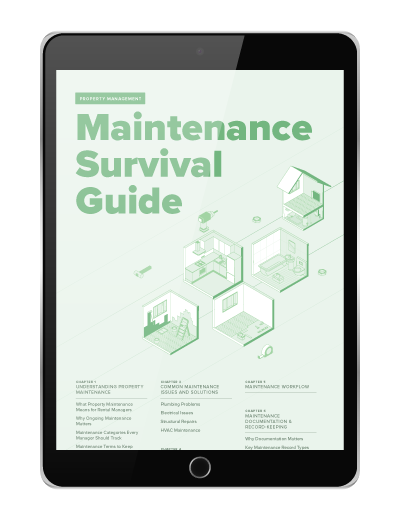Halloween can be a really fun night for children and adults alike. Costume parties, haunted houses, corn mazes and the beloved trick-or-treating excursions are just a few ways to get in a festive spirit. But what’s scarier than fake blood? A property manager ill-equipped for Halloween night.
Property managers must determine in advance how they will handle trick-or-treating. Will they encourage trick-or-treating or steer clear of it altogether? In reality, how a property manager prepares depends on the type of portfolio he oversees.
Let’s start with the larger complexes. Determine whether you’ll host trick-or-treaters, and if so, what the parameters will be. Who will be invited to participate? If it’s open to the community, will you require that guests sign into the building? Try setting specific hours for trick-or-treating and then widely publicize them through the complex. Next, have interested residents sign up, and hand out a list of participating units to all trick-or-treaters as they arrive. This will limit the disturbance to the residents who may be home during these hours, but who have indicated that they would like to sit this festivity out.
The benefit to hosting trick-or-treating for residents is it provides a safe, contained environment for children. At the same time, it can create a host of logistical challenges. Brandon Moore, leasing director at Draper and Kramer, elaborates: “As a large property in downtown Chicago, we do not open the building for trick-or-treaters for security reasons.” They’ve managed a (not-so) healthy compromise: “We do not, however, want kids to miss out, so we hand out ample amounts of candy at the front desk for them to satisfy their sweet tooths!”
Logistics are less complicated for smaller properties—yet these properties offer their own unique challenges when it comes to Halloween preparation. The measures below should be taken for all rentals, meaning that owners of disparate properties may need to set aside more time in advance to complete these steps (versus the property manager of a complex, where these measures need only be taken once).
Preparing the Property for Trick-or-Treating
- Ensure the property is well-lit. Outdoor bulbs should be replaced and lighting should be installed along the most-likely traveled path for trick-or-treaters. Just because the tenants typically enter through the back door does not mean that children will know to do so; ensure that the front entrance is just as well lit as the back. Consider installing motion-sensor lights, which will enhance visibility for costumed guests and will reduce the likelihood of vandalism.
- Secure all loose railings, stairs, bricks and stones in walkways. If you’ve been putting off repairing a loose stair, there’s no better time to be proactive. Loose materials present an everyday risk to tenants but at least tenants are typically aware of these defects and know to use caution. Excited children won’t be as vigilant, creating heightened risk for accidents on Halloween night.
- Fill any front-yard ditches. What seem like inconsequential divots on the average day can create an obstacle course for young trick-or-treaters on Halloween. Even with well-lit walkways, there will inevitably be children who dart through the front yard to get to the front door.
- Clear all common areas, walkways and driveways from miscellaneous debris or items that could trip up children. Don’t forget that children are often in face masks and over-sized costumes that create stumbling blocks as it is; if a rake falls over in the driveway it could be easy for a child to miss. A safe bet is to put these items in storage in advance of Halloween night.
- Eliminate loose objects around the property (especially those of throwing-size). In addition to the safety reasons outlined above, loose objects become a hazard on the so-called “mischief-night.” Bricks, rocks, and even pumpkins are all fair game for the troublemaker looking to retaliate against the resident that foregoes giving out candy on Halloween night. Along these same lines, make sure that garbage has been taken out and the bins are properly secured.
- Lock all doors, garages and gates around the property to prevent access to unauthorized areas. This is particularly important for those who manage vacant properties since intruders will be less obvious to observers on Halloween night. (Lights should also be turned off at all vacant properties to indicate nobody at that house is giving out candy.)
- Ban candles in tenants’ jack-o-lanterns. Police departments report an uptick in accidental fires around Halloween, many of which are caused by candles in jack-o-lanterns that are unattended or knocked over. As an alternative, you may even want to provide inexpensive electric tea lights, or suggest that tenants use them instead.
- Remind tenants that children in costumes can scare dogs, and scared dogs may bite. Ask that animals be tied up or otherwise restrained on Halloween to prevent accidental dog bites. This is a good time to remind landlords about dog bite liability if they allow tenants to keep pets on the property, and to review insurance coverage accordingly.
Property managers who take these precautions are well-prepared for Halloween night. But as the old adage goes, even the best laid plans often go awry.
Insurance Coverage takes some fright out of the night
Though there’s probably little reason to fear major vandalism, property managers should be ready to respond in the event something happens. Most insurance companies cover acts of vandalism and malicious mischief. Similarly, insurance companies will usually cover fire-related damages in the event that a jack-o-lantern or other decoration goes up in flames and causes damage to the property.
As a general rule of thumb, property owners are liable for any accidents or vandalism that occurs on Halloween night. Tenants can only be held responsible for actions caused by their own actions or the actions of their guests, and are only responsible for damage to their personal property. In the event a tenant reports damage to the property management company, remind the tenant to file a police report as soon as possible.
Property managers are encouraged to use discretion if and when vandalism occurs. For instance, if an elderly woman puts a pumpkin on her front stoop and a local troublemaker throws that pumpkin through a window—do you want to go after the old lady since the damage was incurred as a result of her personal property being left unsecured? You could, but to what end? It is probably not worth straining a relationship with an otherwise wonderful tenant when she never intended to cause harm.
Halloween can be a really fun time, for property managers and tenants alike. While property managers have heightened responsibility during this time, they can also spearhead a number of fun fall activities that recognize tenant appreciation and foster a greater sense of community among residents. The possibilities are endless—from hosting a costume exchange to gathering children to tell horror stories. Just make sure to take these important Halloween precautions first to ensure you won’t have a horror story to contribute next year.
Read more on Maintenance

